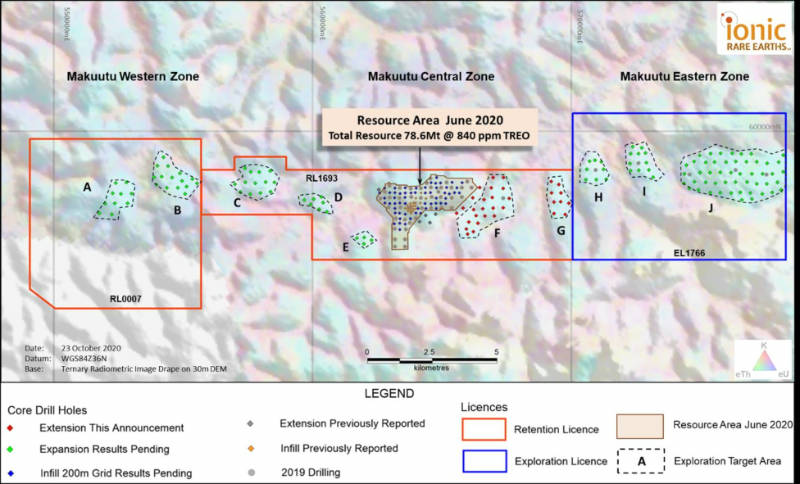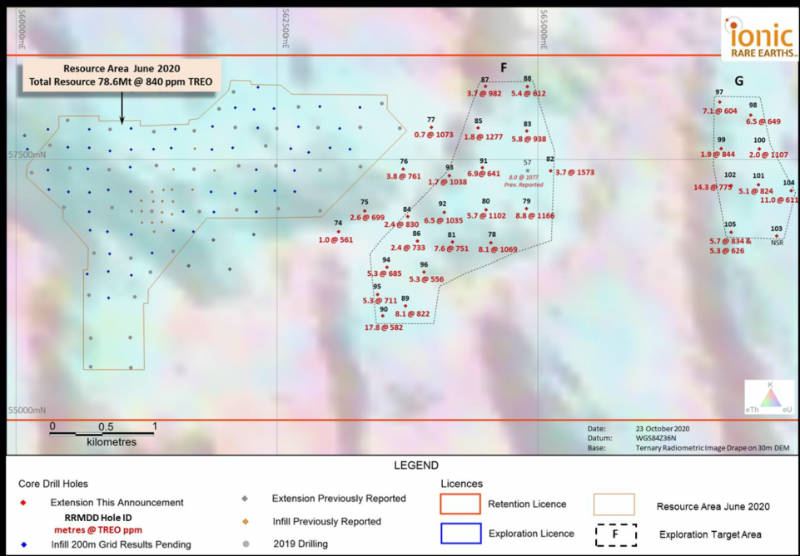Makuutu resource upgrade looking likely for Ionic Rare Earths

Pic: Schroptschop / E+ via Getty Images
Special Report: Ionic Rare Earths’ (ASX:IXR) drilling has met its objective of upgrading the unique ionic clay resource at the Makuutu Rare Earths Project in Uganda.
The second tranche of assays from the completed Phase 2 drill program, which is testing an area three times the size of the current resource estimate area, has confirmed a material extension of rare earth mineralisation east of the current resource boundary.
“We are very happy with recent results, confirming, as expected, that the clay bearing REE mineralisation extends east of the current mineral resource area outlined by the exploration target and remains well defined by radiometric signatures,” chief executive officer Tim Harrison said.
“Pleasingly this bodes well for the other targets which have used the same targeting methods with all intersecting clay. We continue to see near surface thick clay intervals which we expect will all be included in the next resource update.”
He added that pending technical and economic study submissions to the Ugandan Directorate of Geological Survey and Mines kicks off an exciting three to four months for the company.
“We expect the strategic importance of Makuutu, as one of only a handful of non-off-take contracted ionic clay projects globally with appreciable heavy rare earth content, with in excess of a 30% product basket of magnet metals including 5% DyTb (dysprosium and terbium), to be further realised over this timeframe.”

Ionic added that while all processing and packaging of samples from drilling are now being finalised in Uganda, elevated demand at analytical laboratories in Western Australia meant that drill assays have been delayed.
However, it still expects to receive a steady flow of assays from now until the end of the year.
Rare earths drilling
Ionic’s Phase 2 program consisted of 222 holes – 165 resource extension and 57 infill holes – totalling 3,745m that were drilled across the three tenements that make up Makuutu.
This was aimed at validating the exploration target of between 270Mt and 530Mt grading 0.04 per cent to 0.1 per cent total rare earths oxides (TREO), quantifying the potential of the 26km long Makuutu mineralisation corridor and providing data for an upcoming resource expansion.
Makuutu has a current resource of 78.6Mt grading 840ppm TREO.
In the second tranche of assay results, four extension holes directly between 150m and 300m east of and on the same plateau as the existing resource returned narrow intersections that reflect the margins of the mineralisation on the edge of that plateau.
This included a top hit of 3.8m at 761 parts per million (ppm) TREO from 4.2m.

At Resource Expansion Area F – a discrete 2.6km long by 1km wide plateau about 1km east of the current resource estimate – all 19 holes intersected near-surface mineralisation above the resource cut-off grade of 300pm TREO less cerium.
The mineralisation style is consistent with that found in the resource area with drilling returning top results of 8.1m at 1,069ppm TREO from 3.4m, 8.8m at 1,166ppm TREO from 3.3m and 3.7m at 1,573ppm TREO from 3.6m.
Drilling further to the east at Resource Expansion Area G has also intersected rare earths mineralisation with eight of the nine resource expansion holes intersecting mineralisation above the cut-off grade.
Notable hits at the 1.3km by 500m plateau located 3km east of the resource boundary are 14.3m at 775ppm TREO from 3.5m, 11.4m at 661ppm TREO from 6.3m along with two zones of 5.7m at 834ppm TREO from 3.3m and 5.3m at 626ppm TREO from 11.5m in the same hole.
Ionic noted that while mineralisation at Area G is of consistent thickness with that within the resource area, the grade is marginally lower due in part to disruption to the mineralised zones from unmineralised sand horizons intercalated with mineralised clay in some holes.
These sand zones may indicate a proximity to the southern margin of the mineralised sedimentary basin.
The results follow up on the first tranche of results which included five resource extension holes that all intersected rare earths mineralisation above the cut-off.
Unique rare earth mineralisation
Makuutu’s rare earth mineralisation is uniquely contained in ionic clays, a style of mineralisation that is rare outside of southern China. Ionic clays have a low capital and operating cost base, generate no radioactive tailings, and produce heavy and critical rare earth dominant intermediate products that have made ionic clays considered the most high sought out rare earth deposits. There are less than a handful of potentially economic ionic clays deposits worldwide outside of southern China.
Metallurgical testing at Makuutu has already proven that heavy rare earth elements are readily recoverable using simple, low-cost mild desorption/leaching conditions.
In September, Ionic increased its stake in the project to 46 per cent on the back of recent milestones and continues to progress towards an agreed minimum potential ownership of 60 per cent.
This article was developed in collaboration with Ionic Rare Earths, a Stockhead advertiser at the time of publishing.
This article does not constitute financial product advice. You should consider obtaining independent advice before making any financial decisions.
Related Topics

UNLOCK INSIGHTS
Discover the untold stories of emerging ASX stocks.
Daily news and expert analysis, it's free to subscribe.
By proceeding, you confirm you understand that we handle personal information in accordance with our Privacy Policy.








